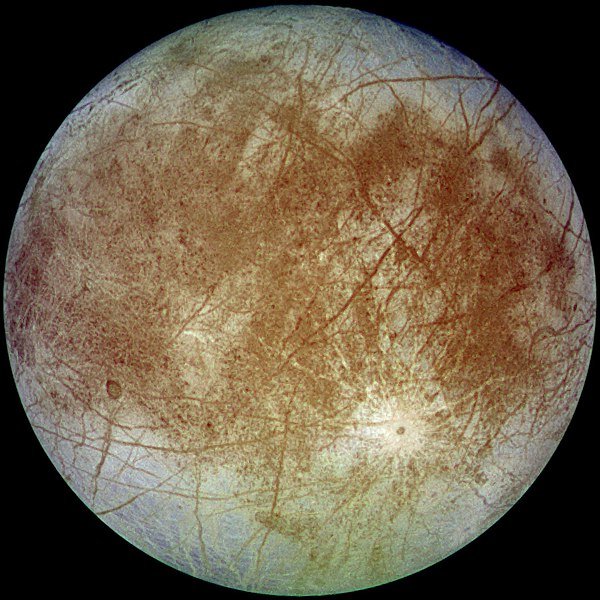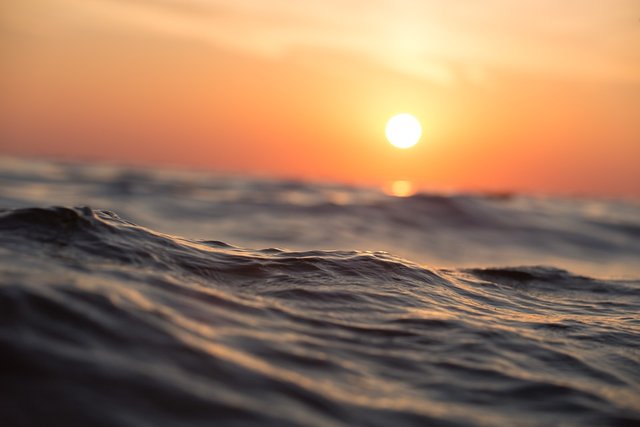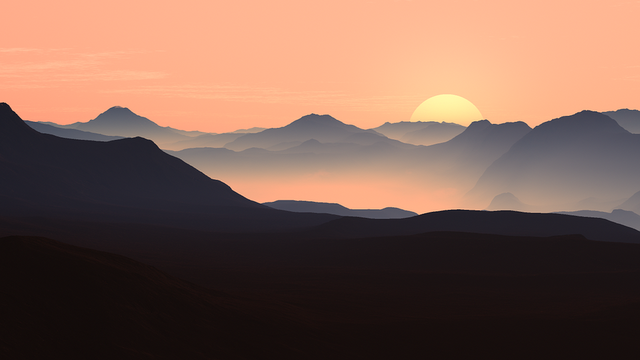Can Man Someday Live on the Moon?
In recent times, I have been writing a lot about naturally occurring satellites and the possibility that someday, they may be able to host life. Regardless of the complexity of this life form, and the simpler the better, as it will lay the foundation for a sustainable habitat. Life on Earth 3.5 billion years ago started with bacteria and other microbes, before evolution brought about the complexities of life on the supposedly only planet with life. Which remains in open debate as there have been reports of flying saucers spotted in different parts of the galaxy, and also here on Earth, and these saucers are reported to be piloted by unknown beings. But officially, Earth is the only planet that has been confirmed to support all forms of support life, to the best of knowledge available to the public.
First off, we will look at what it means for a moon to be considered hospitable in order for them to be able to support any form of life. Then, we will go ahead to explore some of the moons that match this description in some forms. Although this habitability doesn’t necessarily mean lifeforms exist on these satellites, as mentioned earlier, Earth is the only Solar object confirmed to have lifeforms in it. Naturally occurring satellites with the strongest possibility to be able to support life are icy moons like those of Saturn and Jupiter.
The reason I am have been fascinated by alien life in these icy worlds is because, historically, we have thought of life on Earth in the past was a surface phenomenon, but in line with recent studies that prove that half of the Earth’s biomass lives beneath the surface, and ⅓ of the Earth’s biomass lies beneath the ocean floor. Now, the majority of the moons that will be mentioned in this post have subsurface oceans, and it is no secret that water is a key ingredient for life.
The parameters of habitability for planets, is very similar to those used in determining habitability for satellites as well, except a few nuances.
Water in its Liquid form
Astrobiologist strongly believes that water is an important prerequisite in the quest to find extraterrestrial life. Strong evidence suggests that the icy moons orbiting most of the gas giants like Saturn, Jupiter, Neptune and Saturn, all have subsurface liquid water beneath its surface. Although it hasn’t been officially confirmed that any of these moons indeed have active water bodies beneath its surface, but recently, The Hubble Space Telescope captured images of water plumes sprouting from the icy cracks on Europa into space. And this single piece of information strongly suggest the presence of water beneath the surface of the Galilean Moon, and also it is evident that there are activities going on at the rocky core of the moon, which could lead to chemical reactions, reactions that could be the genesis of life on Europa. Also, Enceladus has similar features, but we will discuss all that in the paragraphs ahead.
Atmosphere
Astrobiologists also consider the atmosphere as another important element as it plays a key role in “prebiotic chemistry” also known as “Abiogenesis” (which is basically the natural process where life arises from nonliving things), it is important in maintaining life, as well as enabling surface water to exist. A majority of the moons in the Solar System don’t possess a significant atmosphere, with the exception of Titan, which is Saturn’s moon.
Sputtering, a process whereby atoms are ejected from a solid target material due to the bombardment of the target by energetic particles, presents a significant problem for natural satellites - Wikipedia
The major reason why most satellites don’t possess an elaborate atmosphere is because of this “sputtering” phenomenon. Due to the magnetospheres of the Jovian planets, aka gas giants, whom possess the Van Allen radiation belts, that are strong enough to completely dissolve the atmosphere of a satellite that may have a similar atmosphere to that of Earth in a few matter of hundred million years. Other forces such as stellar winds, solar winds, can also rid atoms from the top of an atmosphere, which can lead to the atmosphere of a satellite getting lost into space.
In order for a moon to stop the loss of its atmosphere to space by the sputtering process, the moon needs to have a strong magnetic field, this way it can deflect the radiation belts and stellar winds coming its way. Ganymede is the only natural occurring satellite known to possess its own magnetic field, and recent evidence suggests that Ganymede possesses a thin oxygen atmosphere, it is still unclear if the oxygen level in Ganymede’s atmosphere can support life.
Due to the unavailability of a distinct atmosphere, whenever a moon loses its atmosphere, the moon replenishes this lost atmosphere (at least what was there before) with gases from sources beneath its surface, scientist believe that this is the case of Saturn’s moon - Titan
Orbital Stability
Researchers simulated what can be said to be the orbital stability for a moon, which naturally orbits a planet, As an example, if a planet orbits its host star in 90 days, the maximum stable orbit for any moon that orbits that planet is 10 days or less. Hence explaining the formula Pp must be <1/9, where orbital P is the orbital period.
Satellites whose orbital period is less than 45 - 60 days will continue to be bound to a brown dwarf or a giant planet that orbits 1 AU (Astronomical unit) from its star.
Climate and Axial Tilt
Tilt erosion which has originally been coined for the tidal erosion of planetary obliquity against a planet's orbit around its host star.
When a moon’s mass in comparison to its planet is not low, this could stabilize the planet’s obliquity against its host star. For example, the Moon plays a key role in stabilizing Earth’s axial tilt, because of the mass of both bodies, and in so doing, this reduces the gravitational impact from other planets, and this same axial tilt also ensures an even climate variation throughout Earth. The case is different on Mars whose moons Deimos and Phobos are low massed, and the axial tilt of the Martian world experiences extreme changes, yet another reason why going to Mars is a bad idea.
Tidal Effects
Tidal acceleration, which can be said to the be the effect of tidal forces between an orbiting moon, and the primary planet it orbits, can be a good energy source for the moon, in fact, an alternative energy that can sustain life, but the effect may not be favourable to the planets. Now, moons that are tidally locked to a brown dwarf and gas giants can possibly be in good fortune as it may in making the satellite habitable due to tidal heating, conversely, it may not be so favourable to the planet, especially if it's within the habitable zone. Because the presence of the moon may disrupt the stellar radiation the planet may be enjoying from its host star.
The temperatures of a moon tidally locked to a gas giant may be less extreme when compared to a planet tidally locked to a Sun-like star. These tidal effects can also enable a satellite support plate tectonics which could lead to volcanic activities that can enable the moon to regulate its temperature, and possibly create a geodynamo effect that could give the moon its own magnetic field.
Inferences
Based on these factors, we will be briefly examining some of the known moons in the Solar System, and we will start with my favourite moon - Europa.
Europa - Europa orbits Jupiter, along with 3 other moons: Io, Callisto and Ganymede, it is known to possess a massive subsurface ocean, and with the recent confirmation of plumes on this icy, it suggests that there are geological activities going on beneath the icy as well as irradiation and tidal heating. There is the possibility that this satellite could have more oxygen and water than our host planet.
Titan - Thanos should be excited about this one. Titan orbits Saturn, and it is thought to be similar to Europa on many fronts. Its present atmosphere is similar to Earth’s during its early day, but Titan’s atmosphere is a bit thicker, which suggests that Titan could someday support mass-murdering Thanos-like life. The surface of the moon consists of lakes made of hydrocarbons, and it experiences methane rain and snow. Titan possesses a magnetosphere which protects it from the solar wind. Its atmosphere is believed to be enough of this world be create organic molecules.
Enceladus - Also orbits Saturn and consists of a subsurface ocean that is made of liquid which is a result of the geothermal activity or tidal heating. Recently, there has been some good news with the discovery of molecular hydrogen with is yet another potential source of life because of the energy it produces
Ganymede One of the Galilean moons of Jupiter known to also possess a subsurface ocean, that is covered with ice.
Callisto This Galilean moon of Jupiter possesses subsurface ocean that is being heated by tidal forces
Io It's the closest of the Galilean moons to their host planet, and it is exposed to Jupiter’s extreme tidal heating, which makes it volcanically active. In fact, it is the most volcanically active body in the Solar System
Charon One of the objects that orbit Pluto possibly is made of oceans that may be consist of ammonia and water as suggested by cryovolcanic activities.
Dione - Orbits Saturn and data shows that Dione possibly consists of an ocean made of water beneath its crust which makes it suitable for microbial life
References
Wikipedia - Habitability of Natural Satellites
Sky & Telescope - Habitable Moons
Space.com - 6 Most Likely Places for Alien Life in the Solar System





Hello! I find your post valuable for the wafrica community! Thanks for the great post! We encourage and support quality contents and projects from the West African region.
Do you have a suggestion, concern or want to appear as a guest author on WAfrica, join our discord server and discuss with a member of our curation team.
Don't forget to join us every Sunday by 20:30GMT for our Sunday WAFRO party on our discord channel. Thank you.
I wouldn't mind spending a week or two on the moon, but presently living there is not just something I may like to try.
Absolutely!
But if push comes to shove, and I am forced to leave Earth, I'll take my chances (even if it means certain death) on Europa than going to Mars though.
😎Earth is okay for me, I only want to leave when my life span has............
Moon, no way
Lol, same here bro
This post has been voted on by the steemstem curation team and voting trail.
There is more to SteemSTEM than just writing posts, check here for some more tips on being a community member. You can also join our discord here to get to know the rest of the community!